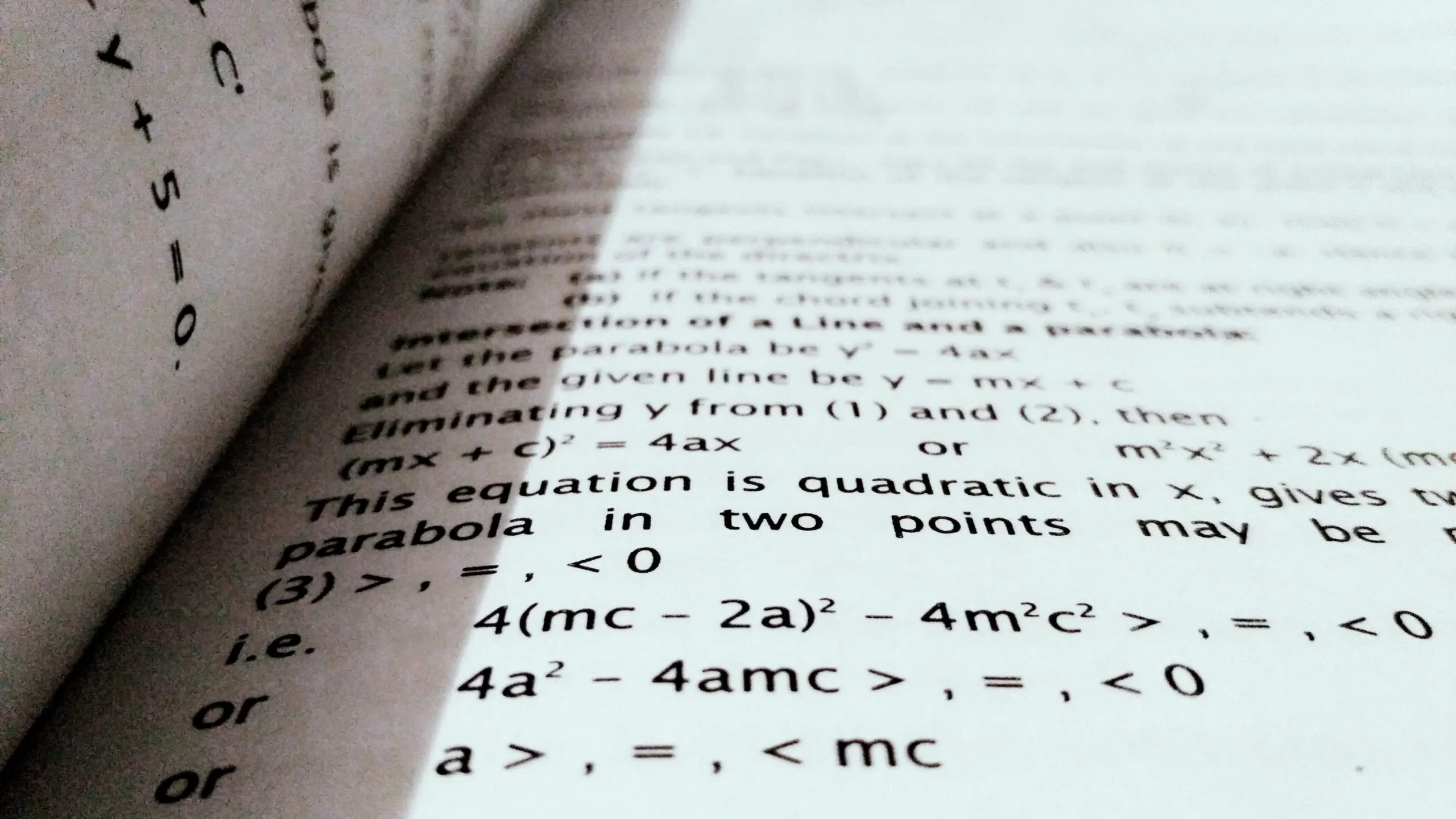Made in partnership with the team at Lanterna Elite.
For your Mathematics Internal Assessment, you have to complete a Mathematical Exploration on a topic of your choice. Whilst sometimes feared by students, this is a chance for you to explore an area of mathematics that interests you! It is a piece of written work that is graded out of 20 marks in total and contributes to 20% of your total grade. Here we look at the structure of the assessment, how to choose a topic, how to lay out your assignment and what to include.
Structure and how to choose a topic
The Maths IA forms 20% of your overall grade for Maths studies, SL and HL. The IBO recommend that it is 6-12 pages in length and includes maths that is commensurate with the level of difficulty of the course. This can be partly formed by maths studied within the IB maths syllabus, but it is also recommended that you look elsewhere for inspiration.
You could look at the optional modules (available at HL) that you do not study for potential starting points and build from here. Alternatively, think about an area which interests you where maths could be applied. If you’re looking for tailored support on your IA or need help mastering other IB subjects, check out our 1:1 Tutoring offering for expert guidance from experienced tutors who know the IB inside out.
Personally, I chose to investigate the bottle flip for my Maths IA as this became well known whilst we were preparing our IA ideas. Choosing something personal will allow you to score highly on the personal engagement criteria, which we will talk more about below.
A good way to structure your internal assignment would be the following:
- Introduction – Consider the background to your topic and where there is an opportunity for mathematical exploration
- Rationale – Why did you chose your topic (linking this to the introduction)
- Aim – What you would like to achieve from your exploration. Make sure these are clear and focused aims and show evidence supporting your personal engagement
- Main body – Where the maths comes in. Look at different perspectives on the problem and discuss their respective merits and outcomes
- Conclusion – What did you learn, what were your limitations and what areas are there for further exploration and application of your research?
Whilst this is a good way of approaching the assessment, the IBO state that this is definitely not the only way. If you think there is a better way do use it as this may allow you to show personal engagement and score highly.
Marking criteria
The IA marking criteria are split into 5 categories, which we break down below:
Communication (4 marks)
The way you communicate in the Internal Assessment needs to be coherent, well organised, concise and complete. Conciseness has been emphasised as the IBO have recognised that some IAs have been too long and this has detracted from the quality of students’ work. To reiterate, 6-12 pages of concise and rigorous critical thinking is a good guide regarding how much to write.
In addition, the IBO have recommended that all graphs, tables and diagrams should be embedded in your main body (not as appendices). This will help the examiner read through your work clearly and so will improve your chances of scoring a better mark. Similarly, citing when and where other people’s ideas are used throughout your essay is key, as well as having a bibliography at the end. This will ensure you steer clear of plagiarism by highlighting to the examiner which work is your own – which will also improve your chances of scoring highlight in personal engagement.
Mathematical presentation (3 marks)
Firstly, the IBO recommend that you define key terms where required. Definitions, which can be found in textbooks or journal articles (please remember to reference!), will help the examiner follow your exploration and shows that you understand the topic. Similarly, ensure that you are using appropriate mathematical language such as notation, symbols and terminology. Try not to be too complex in the language you use as, if used wrongly, this may show a lack of understanding and drag both your mathematical presentation and communication marks down. However, please do use mathematical language where necessary. Define it, and explain clearly what it is referring to in your exploration.
Furthermore, try to make your work look visually pleasing by using multiple methods of presentation. These may be formulae, diagrams, tables, charts, graphs or models, and should be used to demonstrate your understanding of the topic. Please type out your own equations and draw your own graphs (for example, use Desmos and print screen, limiting any branding that is visible) and ensure all graphs have axes labels and headings. Finally, and most importantly, ensure all graphs have a purpose! This will demonstrate an ability to critically highlight the key elements of your exploration in a concise and coherent manner.
Personal engagement (4 marks)
Often the trickiest of the 5 criteria to score highly in, personal engagement requires you to demonstrate your connection with the topic. There are a number of things you can do that will improve your mark in this criterion:
- Speak in first person – This will show that you are the one who undertook and researched this project and that you value it
- Present the exploration in your own style – Differentiating yourself from other students in this way will show you have not just followed a template approach
- Talk about the challenges you faced – Doing so will improve your marks in the personal engagement and reflection criteria
- Discuss how you felt (surprised, frustrated) as your investigation progressed – Again, this shows your personal connection with your exploration
- Highlight the mathematical concepts you have learned – How has this exploration developed your mathematical ability?
Reflection (3 marks)
Proving yourself wrong or getting a result you were not expecting is not necessarily a bad thing as it will offer you a chance to reflect and score highly on this criterion. Try to recognise what caused the result that you were not expecting and, as importantly, how this could be fixed. Also reflect on the successes of your exploration – Did you succeed in proving something, obtaining an optimum result or modelling a difficult concept? Discussing both the strengths and the weaknesses of your work here will help you to score highly.
Moreover, try to discuss different approaches that you have taken or could have taken and how these may have impacted your results. For example, did you use a simple model to begin with (as I did in my IA), which allowed you to isolate the key equations, and build a more complex structure from here? Evaluating potential approaches from different perspectives will show strong critical analysis.
Furthermore, if you have space you could discuss the implications of your work or areas for further exploration. Do the results you have obtained imply any policy changes or develop our understanding of a topic area? Alternatively, could you apply your research to other fields, or explore further areas within the topic? If so, please try to include these to score highly for reflection.
Use of mathematics (6 marks)
Unlike many people think, you do not have to use mathematics that is way beyond the course level to score highly on this criterion. The IBO recommend that you use maths that is “commensurate with the level of your course”. This may take a syllabus topic, such as calculus, and develop it to go beyond what is covered in the IB course. Alternatively, it may apply this knowledge to a new scenario, as I did using differentiation when modelling the bottle flip. Ensure that, whichever level you choose, your exploration remains at a level where you can include “creativity or (a) personalised problem” to ensure you score highly on the personal engagement criterion as well.
One useful source of topics could be the optional modules that you do not cover as part of your course. If you are a Standard Level mathematician you have free reign to choose one of the Higher Level optional modules for inspiration. For example, a student interested in computer science may choose to explore the use of Dijkstra’s and Kruskal’s algorithms in graph theory. It is important to remember that the IB is more concerned about how you show your knowledge and understanding of the mathematical topic you choose. Sophisticated mathematics may include understanding and use of challenging mathematical concepts, looking at a problem from different perspectives or seeing underlying structures to link different areas of mathematics. The maths need not be complicated, just well explored.
Proof reading
Once you have written your exploration, it is important to proof read it and ensure that there are no grammatical errors and all references use the same structure. Moreover, please make sure that all of the 5 areas listed in the mark scheme have been addressed explicitly.
Top Tips
Whichever topic you choose to do your Maths IA on, there are 3 important things to remember:
- Be engaged! Show your personal enthusiasm for the topic through writing in first person, using your own style and describing the challenges you faced and how they made you feel.
- Aim to be clear, consistent and concise! Be clear with your use of mathematical terminology by defining it where necessary; be consistent with your layout and referencing style; and be concise when writing your work – longer does not always mean better.
- Have fun! This is your chance to explore an area of maths that is likely to not be covered by the syllabus and interests you. Make the project your own and enjoy the experience as much as you can.
Best of luck!!
If you need any help with your Maths IA or any of your other IB subjects, we offer tuition, talks and consultations about everything IB. Please get in touch if you would like to find out more, please see the relevant links at the top of the page, or check out a similar blog post from our team on how to structure and format your Maths IA here.



